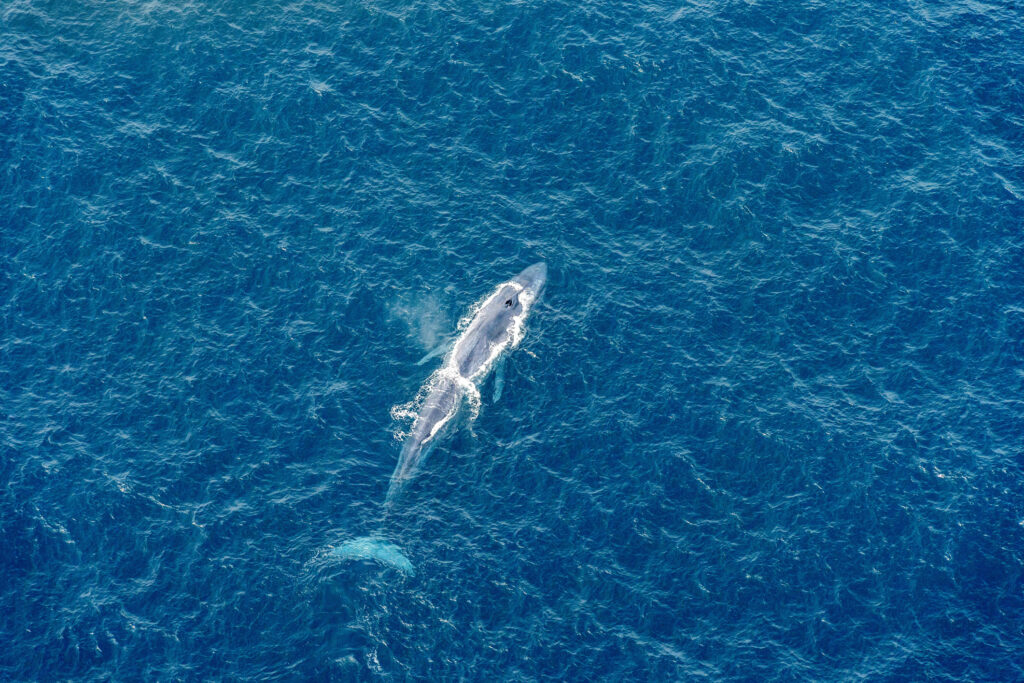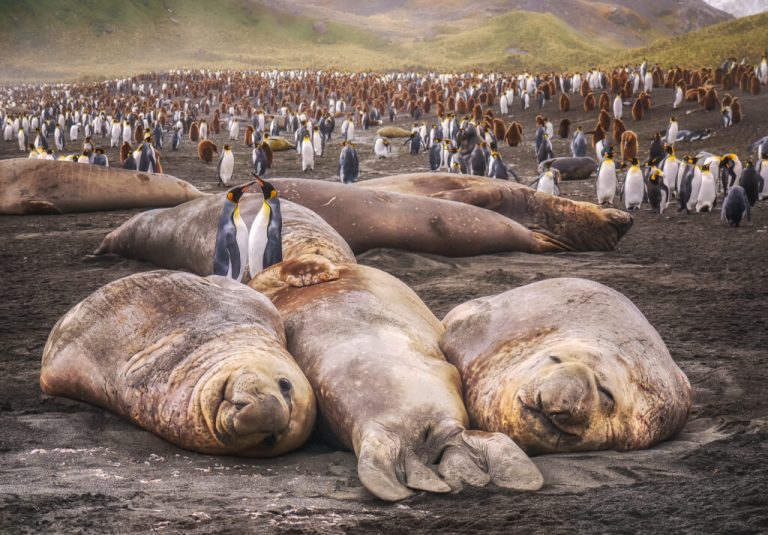Something big, blue, and beautiful is happening in the waters off of the Southern California coast: Blue whales are thriving again — an incredible comeback many decades in the making.
While blue whales are the biggest animal in the world, weighing up to 330,000 pounds (about the same as an average commercial airplane), they are not immune to dangers, particularly human-induced ones.
In the 1800s and 1900s, blue whales were nearly driven to extinction due to commercial whaling activities. Things didn’t start to shift until 1966, when the species was protected from commercial whaling by the International Convention for the Regulation of Whaling. A few years later, whales were listed as endangered and also protected under the Marine Mammal Protection Act.
According to a 2014 study published by researchers at the University of Washington, Seattle, the recovery of West Coast blue whale populations were at a stunning 97% of their carrying capacity in this particular habitat.
As the numbers started to increase, so did the whale sightings. Per KTLA, blue whales are more regularly delighting Californians on whale watching tours. Last month, ABC reported on a “rare” sighting of five blue whales off the coast of Long Beach. And social media videos show the massive marine mammals whales feeding, majestically roaming, and releasing water through their blowholes.
What’s the secret to the blue whales’ success? Jennie Dean, the vice president of education and conservation at the Aquarium of the Pacific, told KTLA, “It’s not just one entity that is contributing to the success of the populations rebounding; it’s really the efforts of everyone.”
Dean explained that the specific efforts to reduce whale mortalities include implementing speed management and adjusting the locations where ships are permitted to go to avoid vessel collisions.
“When shipping lanes are identified as problems, the International Maritime Organization, the National Oceanic Atmospheric Administration, and the United States Coast Guard work together to find solutions,” KTLA explains. “Many shipping companies have agreed to reduce ship speed when going in and out of California ports.”
Another important factor in helping boost populations is monitoring fishing gear, so the animals are less likely to get entangled in traps and nets — a devastating and life-threatening experience for whales of all kinds.
“It’s estimated that ship strikes could take up to 18 whales a year in this particular population and the variability really depends on the density of ships,” Dean said. “So in other parts of the world, the number of ship strikes might vary, but we’ve done a good job here in the United States of recognizing this high source of mortality,” she added.
Additionally, organizations like San Diego’s Scripps Whale Acoustics Lab is working to reduce ships’ noise and design to lessen the impact on the environment, and Whale Safe is on a mission to prevent whale-ship collisions using technology-based mapping.
Today, blue whales are still listed as endangered and have an estimated worldwide population of 10,000-25,000, with about 2,000 in Southern California. Although commercial whaling is outlawed in the U.S. and nearly globally (currently, only three countries still allow it), and measures are in place to keep their futures bright, whales continue to face dangers, such as habitat loss and toxics.
However, their comeback is still being hailed as a sign of hope — not only because it underlines the importance of implementing safeguards to address problems for specific species, but also because it shows what’s possible when the world comes together for a bigger purpose. Indeed, it’s a lesson to be applied to the thousands of other species under threat of extinction.
Dean summarized it nicely: “When we’re able to take collective action and think about balance, such that people and the activities that we want to support like shipping, like recreational use, like commercial fishing, all of those things can coexist.”
Want to help whales thrive and feel “whale”-come? Here’s what you can do, according to NOAA.
• Observe and admire whales from at least 100 yards by sea or land. Learn more about marine viewing guidelines.
• If you see a sick, injured, entangled, or in distress animal, report it. However, do not approach or try to save it, as it can be dangerous for both of you.
• Be “Whale Aware!” Get educated on where whales are likely to be and stay alert for dorsal fins, flukes, and blows.
• When in doubt, always keep your distance!
Read more: Rescued Walrus Calf Separated From Mother Receives Care Regimen of Constant Cuddling












